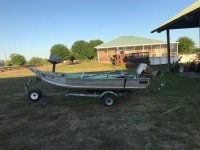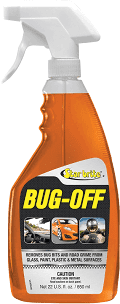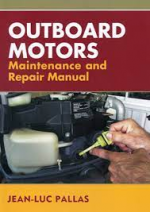Splash deflectors and their gap have nothing to do with engine mounting height settings... the set-up you posted is likely the best for RIB's but not for others.
Really, don't make me laugh that precise setting which have been playing with for the past 15 years works spot on on different light/medium light applications powered with Tohatsu tall gap plates motors to achieve the max prop thrust with a maximized prop running towards max wot rpm range as there's a higher water bed for the prop to grip much better which seems it's extremely difficult for you to mentally dial well.

The OP's boat is a simple one powered with a trully under powered motor for that size. NOPE your idiotic Merc posted examples you love posting doesn't apply here as those only work well for short gap plates large HP bolt on motors and applications you play with...
Other issue Nobody is considering whatsoever is your Boating Location, it's not the same running a boat under full power on flat calm water cond say lakes, river, ponds, your bathtub at straight water courses at whatever lower leg plate height you like dialing. It's a cmplete different story boating at open water where the lower leg deals with chop, wind, currents, wavy situations, swells, etc, for those harsh situations the motor will benefit sitting lower for the water flow to skim right under the small plate to avoid Prop Aeration which is key not to count with. BTW, that precise upper plate setting works top for both boating locations, each with their own respective water situations.
You should always test portable motors while siting flat on transom and check on a wot run on flat calm water cond the combo performance, if need to chop, raise the transom, install a motor mount, jack plate, doel fins it's entirely up to you...
For further clarification and to stop the endless on line lower plates quarrels would be wise for the OP to post his back motor installation to have a look...
Happy Boating
























